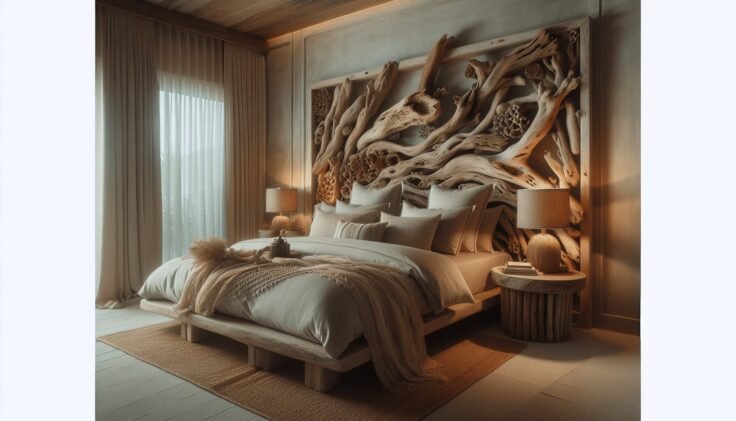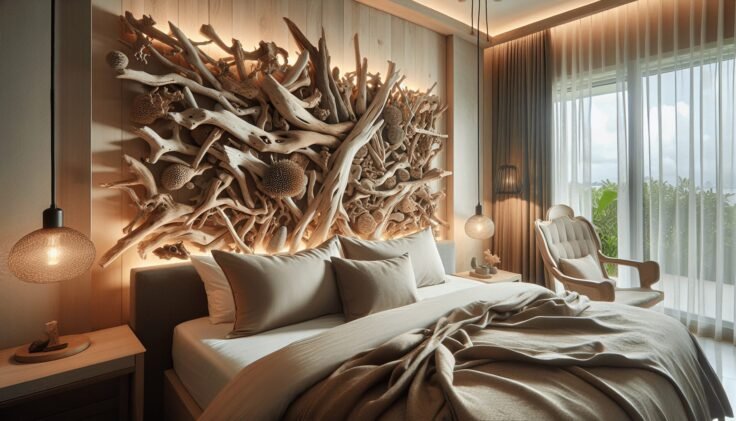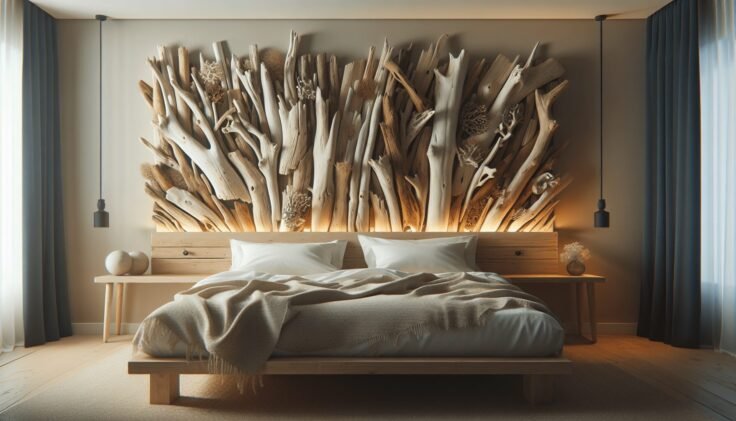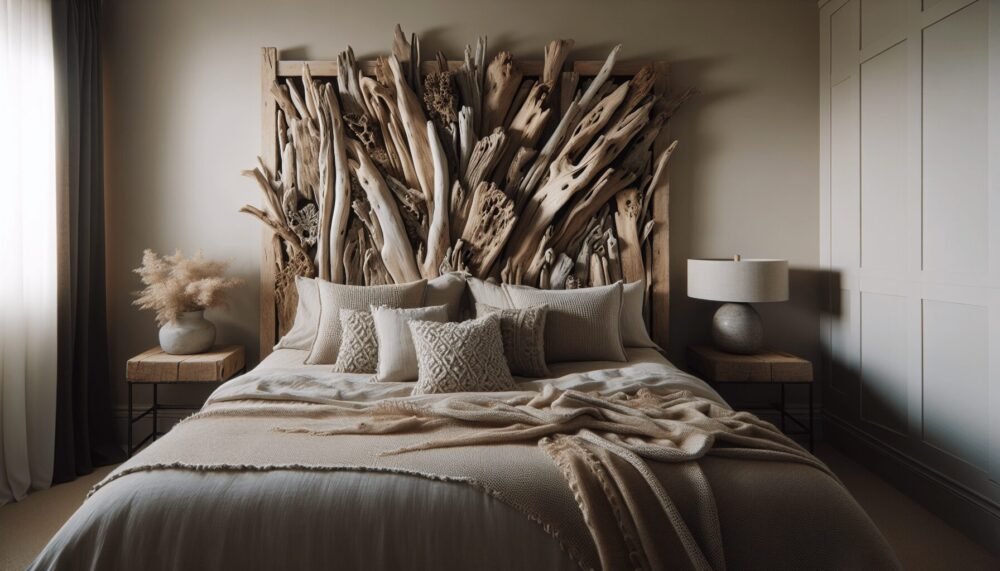Have you ever considered how a seemingly simple, natural material like driftwood can completely transform the ambiance of your bedroom? In its naturally sculpted form, driftwood carries a certain rustic charm, evoking memories of beaches and the gentle tides that shaped each piece. It’s no wonder that driftwood has become a popular choice in home decor, especially for the creation of unique and inviting headboards. This article will guide you through everything you need to know about integrating a driftwood headboard into your bedroom, from choosing the right piece to pairing it with the perfect decor.
What is Driftwood?
Driftwood refers to wood that has been naturally shaped and weathered by the elements, typically washing up on shorelines after spending time floating through oceans, rivers, or lakes. It is prized for its rustic, raw aesthetic that brings a piece of nature into indoor spaces. What makes driftwood unique is its journey — the exposure to water and sun bleaches the wood, giving it various shades and textures that make each piece distinct.
The Unique Appeal of Driftwood
Driftwood is celebrated for its sustainability and natural beauty. No two pieces are alike, bringing a truly one-of-a-kind element into your home. Its appeal lies in its imperfections and organic shapes that tell a story about its origins. Driftwood often inspires creativity and offers versatility; you can leave it raw or enhance its texture with a finish.
Integrating Driftwood into Your Bedroom
The bedroom is a personal sanctuary where comfort and style converge. By using driftwood as a headboard, you introduce a natural element that can set the tone for the rest of the room’s decor. Here, we’ll explore how driftwood can be seamlessly integrated into your bedroom’s design.
Benefits of a Driftwood Headboard
Opting for a driftwood headboard brings several benefits beyond its aesthetic appeal. It’s an environmentally friendly choice, as driftwood is a naturally recycled material. It also offers a neutral foundation that complements various color palettes and styles, from coastal to bohemian or rustic.
Choosing the Right Driftwood for Your Headboard
When selecting driftwood for your headboard, consider the size, color, and texture. The wood should be large enough to create a focal point without overpowering the space. The color should harmonize with your existing decor, be it the natural grayish tones of driftwood or a washed-out white finish. Texture can vary greatly; smoother driftwood provides a sleek look, while rugged pieces may add tactile interest.
DIY vs. Pre-Made Driftwood Headboards
You might be deciding whether to craft your driftwood headboard as a DIY project or to purchase a pre-made piece. Creating your own allows for personalization and the satisfaction of a handmade item, but requires time and patience. On the other hand, pre-made driftwood headboards are crafted by professionals, ensuring durability and a refined finish, but they may come with a higher price tag.
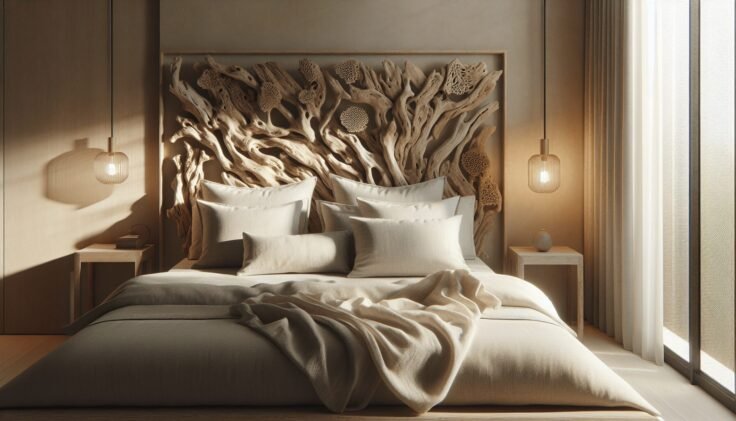
Designing Your Driftwood Headboard Bedroom
Designing a driftwood headboard bedroom involves thoughtful planning and coordination of various decor elements. This section will guide you through the process of creating a cohesive and inviting space around your driftwood centerpiece.
Color Schemes to Complement Driftwood
Driftwood’s natural tones work beautifully with a variety of color schemes. Neutrals like white, beige, or soft gray enhance its natural beauty, creating a calm and serene space. For a more vibrant look, you can pair driftwood with muted blues or greens, reminiscent of a coastal landscape. The table below presents a few color schemes perfect for a driftwood-inspired bedroom.
| Color Scheme | Description |
|---|---|
| Neutral Elegance | Whites, beiges, and soft grays for a calm and balanced look |
| Coastal Blues | Muted blues and greens that bring a beachy vibe |
| Earthy Tones | Browns and olives for a rustic, nature-inspired atmosphere |
| Pastel Accents | Soft pinks, yellows, or lavender for a subtle, artistic flair |
Furniture and Accessories
To enhance your driftwood headboard, choose furniture that aligns with your room’s overall style. Weathered woods or distressed finishes can echo the rustic nature of driftwood. For a more modern contrast, opt for sleek metal or glass elements. Accessories such as throw pillows, blankets, and area rugs can add texture and warmth, with natural fibers like linen or wool complementing the driftwood’s organic feel.
Lighting Choices
Lighting plays a crucial role in showcasing the texture and tone of your driftwood headboard. Soft, ambient lighting like wall sconces or string lights can highlight the headboard’s details. Consider using fixtures with a natural or industrial finish to maintain harmony with the headboard’s aesthetic.
Bringing It All Together
Creating a driftwood headboard bedroom isn’t just about the headboard itself, but how every element in the room works together to create a cohesive design. Balance is key — the driftwood should be the focal point, but it must also harmonize with the rest of your decor.
Creating a Focal Point
A headboard usually becomes the center of attention in a bedroom. With a driftwood headboard, it’s about showcasing its natural beauty without overwhelming the space. Arrange your bed and furniture so the headboard is positioned against a plain wall where its textures can stand out.
Personalizing Your Space
Personalization is what makes a space truly yours. Use photographs, artwork, and personal mementos to add character and warmth to your room. Incorporating plants can further enhance the natural theme, with greenery providing a refreshing contrast against the wood.
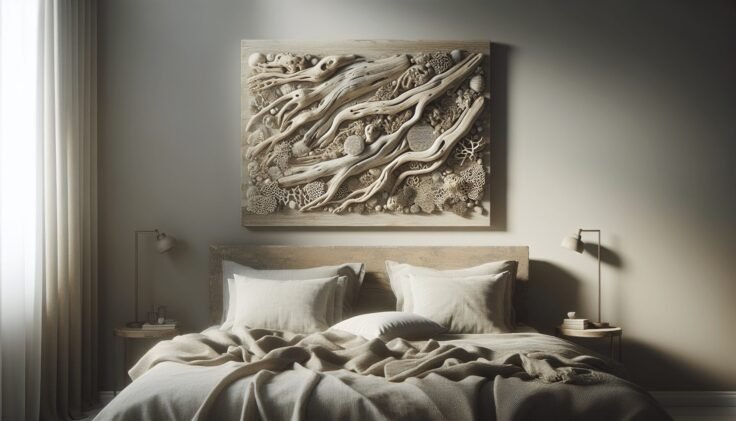
Caring for Your Driftwood Headboard
To keep your driftwood headboard in excellent condition, regular maintenance is essential. Driftwood, by nature, is porous and may require occasional care to ensure its longevity and appeal.
Cleaning and Maintenance Tips
Dust your driftwood headboard regularly using a soft cloth to keep it clean. Avoid harsh chemicals that can damage its natural finish. If necessary, use a slightly damp cloth for spot cleaning followed by drying the wood to prevent moisture absorption.
Preserving the Driftwood
To preserve the driftwood’s color and texture, consider applying a clear wood sealant or finishing wax. This can protect the wood from stains and discoloration, helping maintain its natural charm over time.
Conclusion
Incorporating a driftwood headboard into your bedroom can completely transform the space into a tranquil and inviting sanctuary. With careful selection, thoughtful design, and minimal maintenance, driftwood offers both aesthetic beauty and environmental benefits. Whether you choose to DIY or shop for professionally crafted pieces, the charm brought by driftwood is undeniably worth the effort. Through balance and harmony in your decor, you can create a bedroom that feels not only connected to the natural world but also to you at a personal level. Let the driftwood headboard be a symbol of tranquility and nature’s elegance in your private haven.
